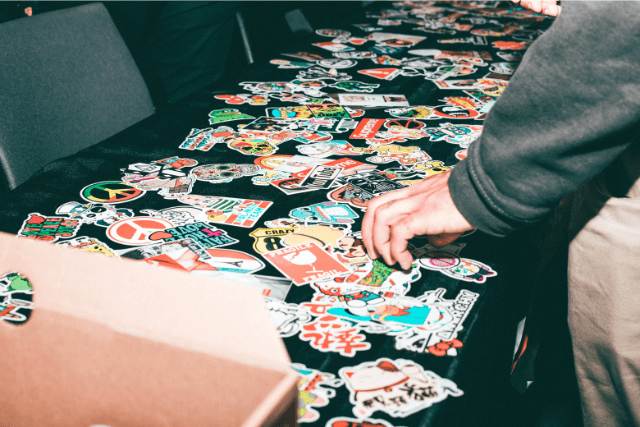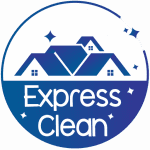How to Remove Sticker Residues Before Moving Out: Best Practices for Facilities & Homes
Sticker residues on doors, appliances, or office surfaces are a common cleaning challenge when moving out of a property. Whether you’re a facility manager, homeowner, or operations lead, knowing how to tackle sticky messes is crucial for a smooth move-out inspection. Read on for professional strategies, chemistry-backed products, timing guidance, and serious safety tips—especially for clients managing properties in Chicago and its suburbs.
Why Removing Sticker Residues Matters
Sticker and adhesive residues left behind can lead to security deposit deductions in rental properties, negative move-out reports, and potential legal or compliance headaches in commercial settings. Effective removal protects surfaces and ensures a great impression for property turnover.
Understanding Sticker Residue: Materials and Chemistry
Stickers and labels often combine vinyl, paper, and acrylic-based adhesives, which bond tightly to glass, metal, plastic, and painted surfaces. The right chemistry dissolves bonds without damaging the underlying material. Always check compatibility and pH balance of cleaning agents:
- Glass/Metal: Most surfaces tolerate neutral to slightly alkaline removers (pH 7-10).
- Plastic/Painted Surfaces: Test a small area, as harsh solvents can cloud or strip finishes.
- Natural Wood: Use mild, oil-based removers; avoid high-moisture solutions that cause swelling.
Essential Tools & Materials
| Item | Purpose |
|---|---|
| Plastic Scraper or Credit Card | Lift edges without scratching |
| Isopropyl Alcohol (70%+) | Dissolves adhesive bonds |
| Commercial Adhesive Remover | Specialty products for stubborn spots |
| Microfiber Cloths | Gentle residue removal & buffing |
| Gloves & Safety Goggles | Personal protective equipment |
| Mask (if using aerosols) | Protects from inhalation risks |
Step-by-Step: Best Practices for Residue Removal
- Assess Surface & Choose Product: Review care guides or test in a hidden spot for colorfastness.
- Soften the Adhesive: Apply a damp, warm microfiber cloth for 1–3 minutes to loosen water-soluble labels (helpful for moving day speed).
- Apply Remover: For tougher residues, dab a small amount of isopropyl alcohol or a commercial product onto the sticker for 1–2 minutes dwell time.
- Follow the spring cleaning checklist best practices for chemical safety and ventilation.
- Gently Scrape & Wipe: Use the plastic scraper, working from the edges; never gouge or use metal tools on sensitive surfaces.
- Repeat as Needed: For stubborn residues, reapply and allow up to 5 minutes dwell time, then buff away with a clean cloth.
- Final Rinse: Wipe with damp cloth to remove any leftover chemical traces, especially before move-out inspections.
Safety & Compliance: Protecting People and Property
Always use PPE—including gloves and safety glasses—when working with potent solvents (like d-Limonene or isopropyl alcohol). Ensure proper ventilation, especially in enclosed Chicago apartments or offices. For commercial sites, reference OSHA guidelines on cross-contamination and safe chemical handling. Dispose of adhesive-saturated cloths and containers as directed by local ordinances to avoid fines.
Scheduling Removal Efficiently
For homes and large-scale facilities in the Chicago area, integrate sticker residue removal into your pre-move or pre-inspection cleaning sequence. Assign specific team members to high-touch spots (e.g., windows, appliances, lockers) for speed and accountability. Pair sticker removal with other detail-cleaning tasks for efficiency. For extensive decal or tape messes, budget extra dwell/work time or seek experienced help.
Quick Reference: What Not to Do
- Don’t use razor blades or steel wool on painted, plastic, or glass surfaces: scratches can lead to costly repairs!
- Avoid mixing chemicals; never combine bleach with alcohol-based removers due to fume and safety hazards.
- Never leave solvents or sprays unattended around children, pets, or open food areas.
Expert Pro-Tips for Facility Managers and Homeowners
- For eco-friendly removal, baking soda-based solutions can lift light residues off glass and tile without harsh fumes.
- See garage floor cleaning guidance for decal stains on concrete/epoxy surfaces.
- Check our full decluttering guide for room-by-room move-out prep strategies.
Table: Surface Compatibility for Adhesive Removers
| Surface | Recommended Remover Type | Precautions |
|---|---|---|
| Glass | Alcohol-based, mild solvents | Avoid abrasives |
| Plastic | Citrus-based cleaners | Spot-test for clouding |
| Painted wood | Water + dish soap, oil-based | Minimize water/moisture |
| Stainless steel | pH-neutral cleaner | Buff dry post-cleanup |
Trusted Resources & Further Reading
- Streamline your move with the new home cleaning checklist.
- Get more spring cleaning tips from this comprehensive checklist.
Best Services
Final Tasks
Removing sticker residues efficiently is more science than guesswork. With the right tools, chemistry, and safety measures, any facility manager or homeowner can streamline turnover and impress during inspections. For more deep-cleaning advice, consult our specialty cleaning guides and consider professional support for challenging projects in the Chicago area.
About the Author
Reviewed by: Express Clean Team
With over 20 years of experience in commercial & residential cleaning across Chicago, our experts ensure each recommendation meets high standards of effectiveness, safety, and regulatory compliance.


heavy duty adhesive tape, Cleaning Service Chicago, Move Out Cleaning Service in Evanston IL, Move Out Cleaning Downer Grove Service, Move Out Service Clean in Skokie il, Move Out Cleaning Service in Highland Park, Cleaning Services Move Out in Wicker Park Il, Move Out Service Clean in Des Plaines IL





